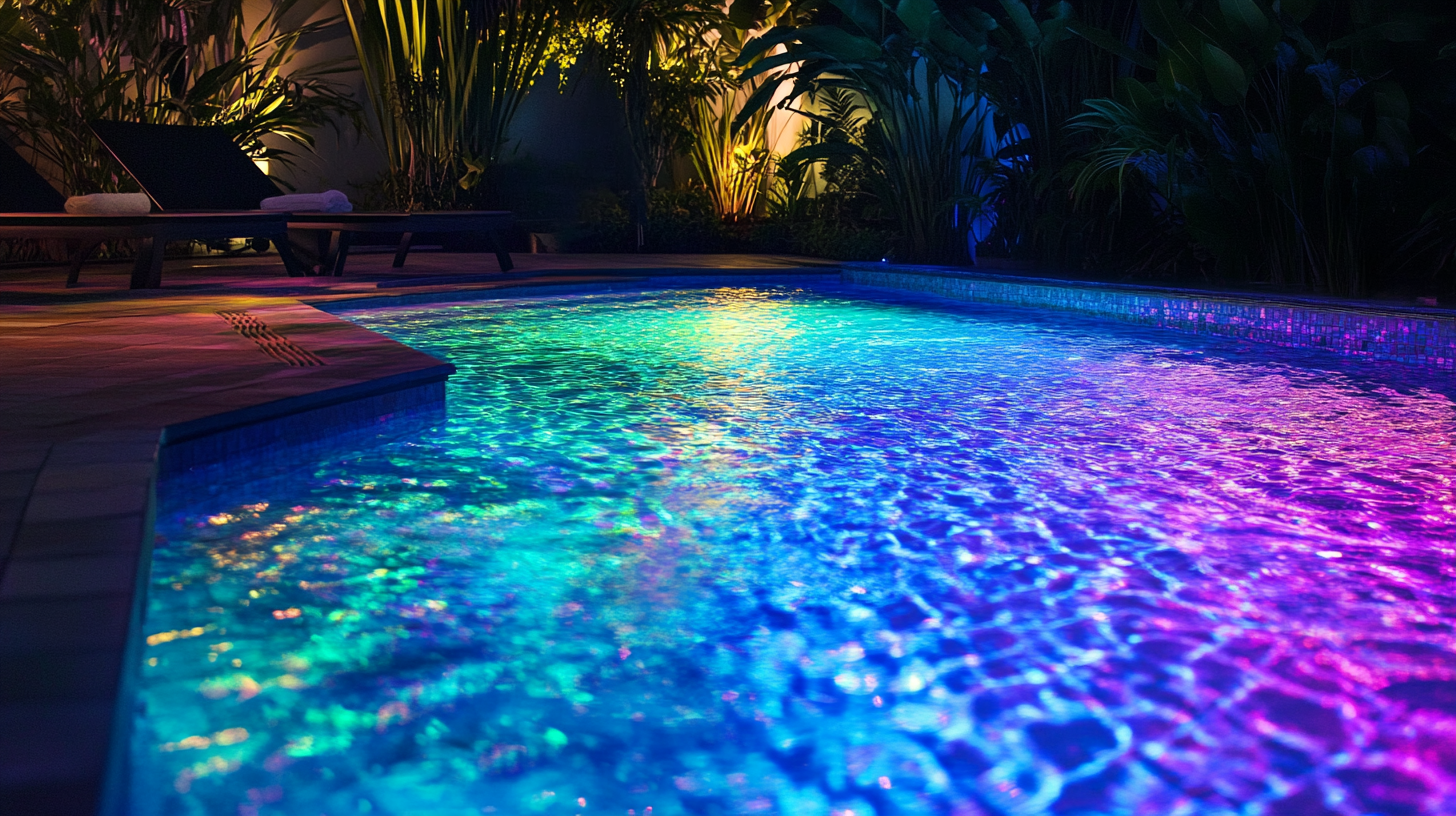Top tips for using underwater boat lights at night
When it comes to crafting the perfect nighttime boating experience, selecting the right underwater lights can make all the difference. With the vast array of options available, from LED to halogen, it’s crucial to consider both functionality and aesthetics. LED lights, for instance, provide longevity and energy efficiency, making them a popular choice among boating enthusiasts. Additionally, they offer a spectrum of colors, allowing for a customized glow that can transform your night on the water into something truly magical.
Another key factor in choosing the right lights is understanding the optimal brightness for your needs. While it might be tempting to go for the brightest option available, sometimes subtle and ambient lighting is what’s required to strike the right balance between visibility and ambiance. You should also consider the water clarity in your usual boating areas, as murkier waters might demand stronger illumination to maximize visibility.
Beyond brightness and color, the construction and durability of your underwater lights are paramount. Marine environments can be harsh, and your lights should be able to withstand saltwater, waves, and occasional impacts. Look for lights with high-grade, corrosion-resistant materials that promise longevity and reliability. Prioritizing quality will ensure your investments hold up against the elemental challenges of the sea.
Don’t forget to factor in the installation process. Some lights are designed for seamless integration with specific boat designs, while others offer versatility but require more effort to install. By considering your own DIY skills and preferences, you can choose the lights that will both enhance your nighttime boating experience and complement your vessel’s unique style.
Installing your boat lights safely
Once you’ve chosen the perfect underwater lights, the next crucial step is installing them safely. Installing boat lighting might seem like a straightforward task, but a few intricacies can make all the difference between a dream setup and a potential hazard. For starters, always ensure that you have the right tools and materials at hand. The essentials typically include a drill, sealant, wiring kits, and, of course, the manufacturer’s instruction manual. These guidebooks are surprisingly full of valuable tips, so reading them thoroughly should be your top priority before diving into the installation process.
Safety first is not just a cliché; it’s a literal lifesaver, especially with nighttime boating. Begin by disconnecting the boat’s power supply. This step cannot be overstated—working with electricity and water is hazardous, and you don’t want to take any chances. Once you’ve ensured there’s no power running, you can confidently start mounting your lights. Be sure to choose spots on the transom that are fully submerged when the boat is stationary, optimizing both visual appeal and functionality.
When drilling holes for the mounting screws or cables, take your time. It’s better to measure twice and drill once. Use a sealant specifically designed for marine applications to ensure a watertight fit that keeps your boat’s hull uncompromised. A poorly sealed light can allow water ingress, leading to corrosion and damage not only to the lights but also potentially to your vessel. This is especially important if you’re installing lights in saltwater conditions where the stakes are even higher.
For the wiring, try to keep the lengths as short and direct as possible. Less is more here, reducing the possibility of electrical resistance or issues over time. Always use marine-grade wiring and connectors to withstand the rigors of a marine environment. Route them carefully away from any heat sources or moving parts to maintain the integrity of your setup. Finally, ensure a robust connection to your power source, typically a waterproof junction box, to keep it all functioning flawlessly. This might also be the time to install a switch in a convenient location, so you have complete control over the glow.
Maximizing visibility in dark waters
When your boat sets sail across dark waters, maximizing visibility becomes essential not only for safety but also to enhance the magical aura of nighttime boating. Start by optimizing the placement of your underwater lights since their position can significantly impact how well they illuminate the water surrounding your vessel. Positioning lights closer to the waterline allows for optimal light dispersion, helping you and your fellow boaters navigate the night safely while minimizing glare or reflections.
Varying the angles at which your boat lighting is mounted can further augment visibility. Instead of directing all lights to a single focal point, consider experimenting with different angles to spread the light evenly across the water. This approach can create a captivating glow around your boat that highlights the beauty of the underwater world, transforming a dark and potentially intimidating environment into an inviting spectacle. Moreover, adjusting angles can uncover shadows and decrease blind spots, providing a clearer view beneath your vessel.
The choice of color can also play a pivotal role in maximizing visibility. While you might be tempted to go for the classic white or blue lights, remember that different hues behave distinctively underwater. Blue and green lights, for example, are revered for their ability to penetrate deeper into the water, offering greater visibility in murkier conditions. Meanwhile, warm colors can complement shallower and clearer waters, amplifying the ambiance around your boat. Experiment with different color settings offered by LED systems to find the dazzling mix that suits your boating location and mood best.
Beyond the aesthetic appeal, your boat lights should cater practically to your on-deck activities. Found yourself fishing under the starry sky? Certain light settings can attract schools of fish, giving you an advantage before casting your line. Similarly, more focused beams might be essential in spotting obstacles or attending to gear, improving hands-on boatmanship in dim conditions. Tailor your lighting setup to these circumstances and enjoy both its charm and its utility.
Lastly, consider incorporating smart controls into your boating toolkit. Advanced marine lighting systems often come equipped with remote controls or smartphone apps, granting you the flexibility to modify brightness and colors on the fly. This feature allows you to adapt to changing conditions or simply to set the perfect mood for your night journey, all while ensuring the waters around you remain visible and inviting.
Maintenance tips for longevity
Ensuring the longevity of your underwater boat lights is essential for maintaining their performance and effectiveness in enhancing your nighttime boating ventures. Routine maintenance begins with regular inspections, ideally conducted before and after your outings. These checks can help you identify any visible damage or wear that might compromise the lights’ functionality. Look for signs of lens clouding, corrosion, or any compromised seals that could allow water ingress, each of which can severely diminish their illuminating power.
Cleaning the lights is another crucial maintenance task. In marine environments, calcium deposits, algae, and other forms of marine growth can accumulate on the light surfaces, impacting the clarity and output of your boat’s lighting. To avoid this, clean the lenses gently but thoroughly with a soft cloth and marine-safe cleaning solutions after each trip. It’s important to avoid abrasive materials that might scratch and damage the lens, which could impact the efficiency of the lights.
Consistent care of the electrical components is equally vital. Check your wiring connections regularly, ensuring they are secure and free from corrosion. Marine environments can be particularly harsh on electrical systems, so using dielectric grease on connections can create a more robust barrier against moisture, prolonging the lifespan of your setup. Pay attention to any wiring that seems brittle or is showing signs of wear, as this could lead to potential failures.
Light systems engineered specifically for underwater use are generally designed to be durable, but they are not infallible. Over time, the seals securing the lights to your boat can deteriorate, potentially leading to leaks and water damage. Consider replacing these seals at regular intervals—every two to three years, as a general rule of thumb—to maintain a watertight fit. This proactive measure can help stave off complications before they arise, keeping your boat lighting in optimal condition.
It’s also worthwhile to review the manufacturer’s guidelines specific to your lights. These instructions often incorporate maintenance tips tailored to the unique design and materials of your lights. Manufacturers may provide recommended cleaning products or periodic maintenance schedules designed to maximize performance and increase longevity, ensuring your underwater lights remain a reliable component of your nighttime boating adventures.
Lastly, advanced lighting systems often come with software updates or firmware management options. Keeping your systems up-to-date with the latest features and security enhancements can prevent technical glitches and energy inefficiencies. Take advantage of these updates to ensure your lights are operating at their best and offering you the full spectrum of benefits, from captivating aesthetics to practical utility under the moonlit sky.
Enhancing safety with proper usage
Proper utilization of underwater boat lights is essential for enhancing safety during nighttime boating adventures. The first step is understanding the specific function of each light on your vessel. Underwater lights not only create an enchanting ambiance but also serve as crucial navigational aids. They illuminate the water beneath, helping you spot underwater obstacles that could pose a danger during your night journey.
The strategic coordination of your boat lighting setup can significantly contribute to your safety. Consider using a combination of different light types, such as spotlights and floodlights, to cover varied areas around your boat. Spotlights emit a concentrated beam and can be useful for scanning a particular direction, while floodlights provide a broader illumination radius, ensuring comprehensive visibility. This versatility can help in effectively detecting any potential hazards lurking in the depths or along the water’s surface.
Ensuring you’re not inadvertently blinding other boaters is another essential safety aspect. To prevent overwhelming fellow navigators with intense glare, adjust the angle and brightness of your underwater lights. Consider using dimmer settings or directional adjustments to direct light below the waterline, thus avoiding any blinding reflections above the surface. This mindful practice not only keeps waterways safe for everyone but also preserves the serene beauty characteristic of nighttime boating.
Regularly reviewing and practicing safety protocols with your crew is crucial. Even with the best lighting, unexpected situations can arise. Conduct drills that incorporate scenarios specific to nighttime conditions. Ensure everyone knows how to operate the boat lights and can respond quickly should a lighting failure occur. These drills can foster confidence and preparedness, allowing all aboard to enjoy the excursion safely.
Lastly, frame your boating experience with a clear plan for each trip. Begin by consulting weather forecasts and checking for any navigational warnings relevant to your route. Equip your vessel with essential safety gear, including life jackets and emergency signaling devices. By establishing a routine checklist and taking advantage of all your boat lighting features, you set the stage for a secure and enjoyable night on the water.

